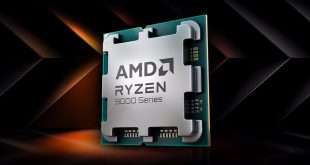V2011 is the first release of 3DStudio Max to fully support the Windows 7 operating system. This is a professional level tool that many people use for work purposes and our test will show any possible differences between board design today.
Autodesk 3ds Max Design 2011 software offers compelling new techniques to help bring designs to life by aggregating data, iterating ideas, and presenting the results.
Streamlined, more intelligent data exchange workflows and innovative new modeling and visualization tools help significantly increase designers’ creativity and productivity, enabling them to better explore, validate, and communicate the stories behind their designs.
Major new features:
- Slate: A node based material editor.
- Quicksilver: Hardware renderer with multithreaded rendering engine that utilizes both CPU and GPU.
- Extended Graphite Modeling Toolset
- 3ds Max Composite: A HDRI-capable compositor based on Autodesk Toxik.
- Viewport Canvas toolset for 3D and 2D texture painting directly in the viewport
- Object Painting: use 3D geometry as ‘brushes’ on other geometry
- Character Animation Toolkit (CAT): now integrated as part of the base package
- Autodesk Material Library: Over 1200 new photometrically accurate shaders
- Additional file format support: includes native support for Sketchup, Inventor
- FBX file linking
- Save to Previous Release (2010)
We render a customised Kitguru scene at 3000×2500 and record the time taken, lower is better.
With the four cores running at 4ghz, they manage to equal the performance of the reference clocked 1055T.
 KitGuru KitGuru.net – Tech News | Hardware News | Hardware Reviews | IOS | Mobile | Gaming | Graphics Cards
KitGuru KitGuru.net – Tech News | Hardware News | Hardware Reviews | IOS | Mobile | Gaming | Graphics Cards




These recent reviews seem to be all over the place tbh.
Would be a lot easier to compare and to read if you just collate all the 3.6, 4, 4.2, 4.3, 4.4 data into one set of graphs and compare it to the i5 and the 1055T to more easily understand the benefits if any of cranking up the voltage and how it compares and/or where it becomes faster than the other CPUs at what clock speed. And just leave the BIOS twinkering articles at the top of the article more
I think it works well. You get a baseline figure for other CPU’s then the performance for the CPU at the reference speed, then intructions for each clock speed setting and comparisions. Its more a guide style, I like them.
4 cores from AMD is pointless now, they need 6 or nothing.
I think its an interesting way of doing it as these processors are so boring and just clocked ramped versions of older ones. This processor in particular is a complete waste of time.
Interesting to see the performance compared to the 1055T with more cores. Has a real hard time keeping up with anything. Not the best idea, AMD need a new design completely, especially with the new Core processors released yesterday.
Cant see anyone wanting this, even AMD followers. 6 cores, it has to be.
I dont agree with pineappleexpress. I bought a 1100T and I found the overclocking performance guide very helpful. sometimes with a page and 20 items on it, it gets confusing. with that article I was able to say ‘I want 4ghz’ and I went to the page, copied the bios settings, after looking at the performance gains. Its unusual style, but I like it for some articles. especially for new models with the same architecture as before.
Well ive kinda gone back on my own theory… Its because normally i just go view all pages so im not clicking next page every minute or so, and in view all theres no page headers so you’re completely lost, just re-read it through and it seems a lot more clear in single page mode
On real usage, it’s pointless to overclock a phenom II without touching CPU_NB speed and only aiming for CPU clock. You should point CPU_NB to the 2.8-3.0GHz range if you want to maximize your overclock because it will starve on bandwidth very soon, specially at >800MHz for ram. The BE gives you an unlocked multiplier and free voltage tweaking just for the CPU_NB, not only the unlocked cpu multiplier, so it should also be used. You might not get such high CPU clock due to the added heat, but the performance gain is worth it, sometimes being greater than a 200-400MHz CPU overclock.
I just don’t get how in most most am3 overclocking reviews CPU_NB is forgotten.